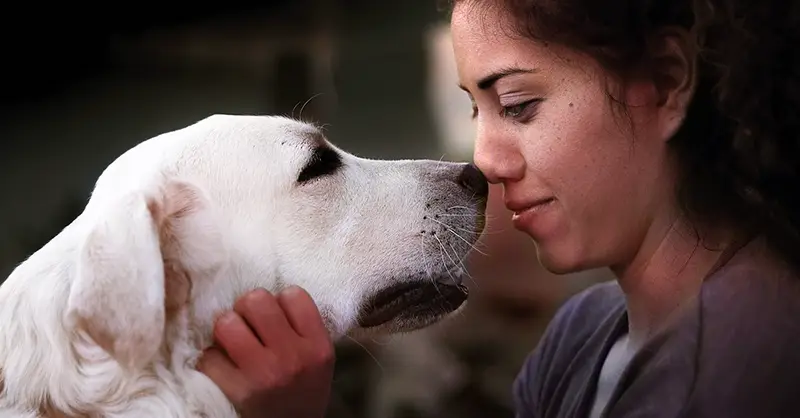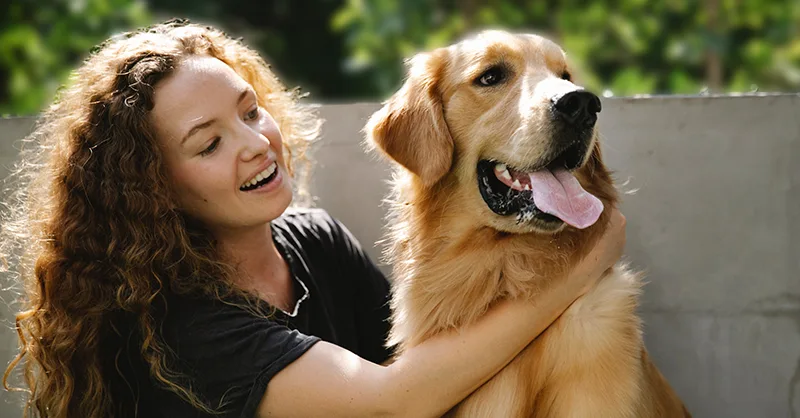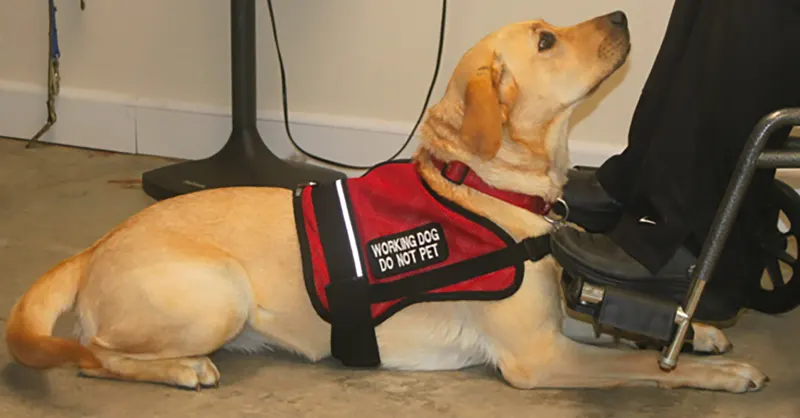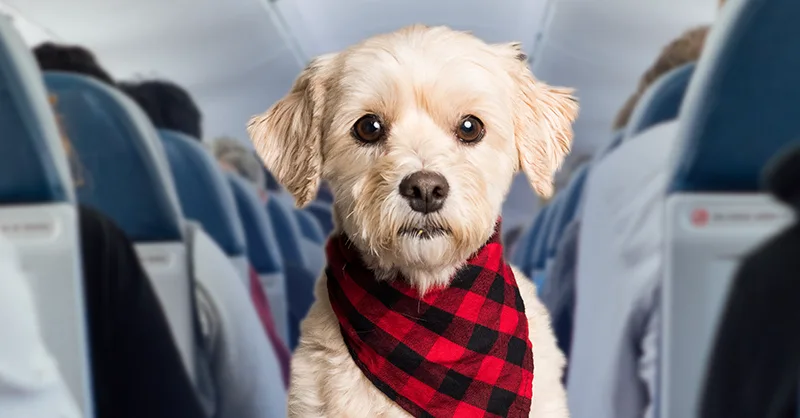Archive for the ‘Psychiatric Service Dog’ Category
Large dogs don’t have the monopoly on being service dogs, though it may seem like they do. The gorgeous Golden Retrievers and regal German Shepherds seen on the streets as service dogs immediately stand out and get our attention. At the same time, small breed dogs are out there working hard as service dogs, too, and they deserve the same credit.
What is a Service Dog?According to the Americans with Disabilities Act (ADA), a service dog is trained to complete a task directly relating to their owner’s disability. A service dog is not a pet and, under federal law, is allowed into public areas where pets are not typically allowed. Some examples of service dogs assisting visually impaired people, helping mobility-impaired people with walking, and dogs who obtain life-saving medications for their owners in times of need.
Small Service Dog to Match the TaskThe American Kennel Club (AKC) acknowledges that service dogs can be of any size. The public’s familiarity with larger breed service dogs can lead them to believe that small service dogs don’t exist. However, service dogs typically match the tasks they need to perform.
A service dog must be the right size to effectively and safely perform the necessary task to help with their owner’s disability.
ServiceDogCertifications.com
For instance, it would not be safe for a small Pomeranian to be a mobility service dog trying to prevent an adult person with mobility concerns from falling. However, there are a variety of tasks that small service dogs are ideal for.
1. Retrieval DogsSmall breed dogs are ideal for retrieval tasks. Particularly in crowded areas like stores or restaurants, small breed dogs can maneuver through objects and crowds much more efficiently than larger breed dogs. Picking up dropped items, obtaining medication, and retrieving writing and work tools are tasks that small breed dogs excel at.
2. Seizure Alert DogsFor people who travel or work, a smaller breed seizure alert dog can be less intrusive to others than a larger breed dog. Smaller breed dogs can be carried, kept on a person’s lap, or placed into a carrier when traveling. They also take up less space in a work area, especially for people who work in cubicles or crowded offices. Because seizure alert dogs must be with their owners at all times, a small-sized dog makes daily commuting less cumbersome.
3. Hearing DogsIt doesn’t take a large dog to hear sounds well. Most dogs have excellent hearing, and small dogs can hear as well as large dogs. People with auditory disabilities may choose small hearing dogs because they’re easier to transport. Having a small dog on their lap or in their arms allows the dog to alert them faster to doorbells, alarms, crying children, and other people.
4. Psychiatric Service Dogs or Hallucination DiscernmentSmall dog breeds can also perform well as psychiatric service dogs. Some dogs help their owners confirm whether a vision or sound is real or not, which allows them to discern hallucinations. Other psychiatric service dogs alert their owners to psychiatric triggers, leading them to safety. In these cases, the size of the dog depends on the owner’s preference, and small dogs are just as capable.
If you’re interested in knowing if you have a qualifying condition for a psychiatric service dog, therapists and doctors can assess your mental health and issue you a signed PSD letter. 5. Diabetic Alert DogsMany smaller dog breeds serve as a medical alert or diabetic alert dogs. These dogs warn their owners of low blood sugar and can bring medication and blood sugar kits. Smaller dogs are quick and agile, allowing them to maneuver around objects during emergencies.
Small Service Dog ConsiderationsThe progression of a person’s disability might be a point to consider when choosing a small service dog. Service dogs can be a costly, though necessary, investment, and a service dog may remain with its owner for a decade or more. Understanding the progression of the disability and anticipating future needs can impact the choice between a small service dog or a larger one. For instance, a person with diabetes who might have signs of diabetic neuropathy in their legs may opt for a larger service dog trained to help prevent falls in the future.
But what small service dogs have over larger service dogs is their convenience. Due to their size, small service dogs fit more readily into areas like crowded subways and aircraft. Small dogs also take up less space, making them ideal for urban apartments and cramped office environments.
Can small breed dogs be service dogs? Absolutely. They’re just as intelligent and practical as large service dogs, at only a fraction of the size!
If you suffer from anxiety, PTSD, depression, or other psychiatric disabilities, experts say a service dog could help. We all know that pups make us happier with their tail wags and slobbery kisses, but they can also be trained to carry out tasks that make everyday life easier—or perform life-saving tasks when we need them the most.
What is a Psychiatric Service Dog?A psychiatric service dog (PSD) is a type of service dog trained to perform a specific task to help a person with a psychiatric condition. They have the same rights as service dogs that perform tasks for the physically disabled. To qualify for the aid of a PSD, a person must have a psychiatric disability that can be assisted by tasks performed by a trained dog.
PSDs can be trained by a professional organization or by the handler on their own. It’s important to note that only dogs can serve as psychiatric service animals under the Americans with Disabilities Act (ADA).
Psychiatric service dogs and emotional support animals, what’s the difference?The main difference between an emotional support animal and a psychiatric service dog is that PSDs are trained to perform tasks relating to the handler’s disability. ESAs, on the other hand, do not need any specialized training — the mere presence of an ESA brings comfort to their owner.
ESAs also do not have legal rights under the ADA. The ADA allows PSDs to enter public areas like stores. PSDs can also board flights and travel with their handlers under the Department of Transportation’s (DOT) rules.
ESAs are not allowed in public spaces that prohibit pets, but they have housing rights under the Fair Housing Act. Both PSDs and ESAs are allowed to live in no-pets buildings without any charge.
The ADA gives the following example of a service dog versus an ESA: If the dog has been trained to sense that an anxiety attack is about to happen and takes a specific action to help avoid the attack or lessen its impact, that would qualify as a service animal. But, if the mere presence of the dog provides comfort with no additional trained actions, that’s an ESA.
It’s important to be aware of the difference between ESAs and PSDs. There is frequent confusion between the two, but you never want to pass off your ESA as a PSD. It’s unethical, and in Florida, it’s illegal to misrepresent an ESA as a service animal.
What tasks can psychiatric service dogs do?The benefit of a PSD is their training to complete important tasks, from everyday needs to life-saving emergencies. Everyone’s needs vary greatly, but PSDs can perform the following:
Engage in attention-seeking behaviors, such as nudging, pawing, licking, or tugging on the person’s clothes, any time the person unconsciously starts self-harming behaviors, has an emotional overload, or zones out into a flashback. Reduce the potential impact of triggers when in public. The PSD can be trained to place their body in front or behind their person anytime they stop, keeping strangers at a safer distance. Provide tactile stimulation. Facilitate social interactions and reduce fears associated with being around people. Wake up a person having nightmares. Get medication and water when the person cannot. Provide balance assistance. Remind a person to take medication and nag until it’s done. What Rights Do Psychiatric Service Dogs And Their Handlers Have?Owners of PSD have rights protected by laws like the Americans with Disabilities Act (ADA), Fair Housing Act (FHA), and Air Carrier Access Act (ACAA). Unfortunately, the ADA doesn’t provide PSD rights to service dogs still in training. But, this rule is different from state to state. Lucky for those in Florida, the state grants dogs-in-training full PSD rights when accompanied by their handler.
There are no breed restrictions for service dogs, so no establishment can deny service dog rights based on the size or breed of your dog. And, no person has the right to ask that you demonstrate a task, provide service dog documentation, or disclose information about your disability. Per the ADA, if a business needs to verify that your dog is a service dog, they may ask two questions:
Is the dog a service animal required because of a disability? What work or task has the dog been trained to perform?Service dog accessories like certificates, registrations, and ID cards are always optional. While these items are frequently used by service dog owners and can be helpful, they can never be required by third parties.
Equal Housing. A landlord cannot make you pay extra to live with your service dog. As with public spaces, you are liable for any damages your service animal may cause to anyone else or the property.
Public Access. You and your PSD have the right to be in all areas of accommodations that the public or customers are normally permitted to occupy. If the public accommodation typically charges a pet fee or deposit, PSDs are not subject to this fee.
Transportation: Planes, Trains, and Cars. You and your PSD have the right to access transportation, including rideshares, without an extra fee. Before traveling with your PSD by plane, contact the airline to ask if they require Deportment of Transportation service animal forms. Airlines may require:
U.S. DOT form attesting to the animal’s health, behavior, and training; and U.S. DOT form attesting that the animal can either not relieve itself or can relieve itself in a sanitary manner, if the animal will be on a flight that is 8 or more hours.If you’re wondering what happens if you’re denied rights because of your service dog, you’d be right to think the law has your back. In Florida, handlers have won cases for being denied access to public events and fair housing. In many cases, the handlers were wrongly told that they must supply medical and service dog documentation.
How Do I Get a Psychiatric Service Dog Letter?A psychiatric service dog letter, or PSD letter, is a letter from a licensed healthcare professional such as a doctor or therapist. A PSD letter states whether the healthcare professional believes you have a mental health disability that qualifies under the ADA for a psychiatric service dog.
PSD letters are obtained by owners to document their health-related needs for their service dog. Third parties cannot demand that you show a PSD letter as a condition for entry or accommodation. Your current doctor or therapist can help you with getting a PSD letter.
You can also seek the help of an online provider for PSD letters. Remote therapists and doctors can assess your mental health and give you a signed PSD letter if you qualify.
Where Can I Get a Psychiatric Service Dog in Florida?There are a number of organizations in Florida that can help with training and sourcing service dogs. Below are a few examples.
Dogs for Life New Horizons Service Dogs K9s for Warriors Southeastern Guide Dogs Canine Companions for IndependencePurchasing a fully trained service dog can be prohibitively expensive for many people. Fortunately, for lower-income and capable handlers, ADA rules allow PSD owners to train their dogs themselves. Many service dog owners have the ability to train their PSDs themselves and have successfully done so.
You do not need the help of any organization to train a service dog, but it is strongly recommended if you have minimal experience in training animals. It’s important to be honest about your skills as a trainer and the capabilities of your dog.
How do I find the right PSD for me?Selecting a PSD for your needs is a highly personal decision. While some might think of Golden Retrievers and Labs as the traditional types of service dogs, a PSD can be any breed you like. In Florida, a dog could be bred to be a service dog, rescued, or you can train an existing pup to be your PSD.
The important thing is that the dog has the proper temperament and ability to become a trained service dog. The personal connection you have with a particular dog should not be underappreciated — the bond between a PSD and their owner is like no other relationship.







